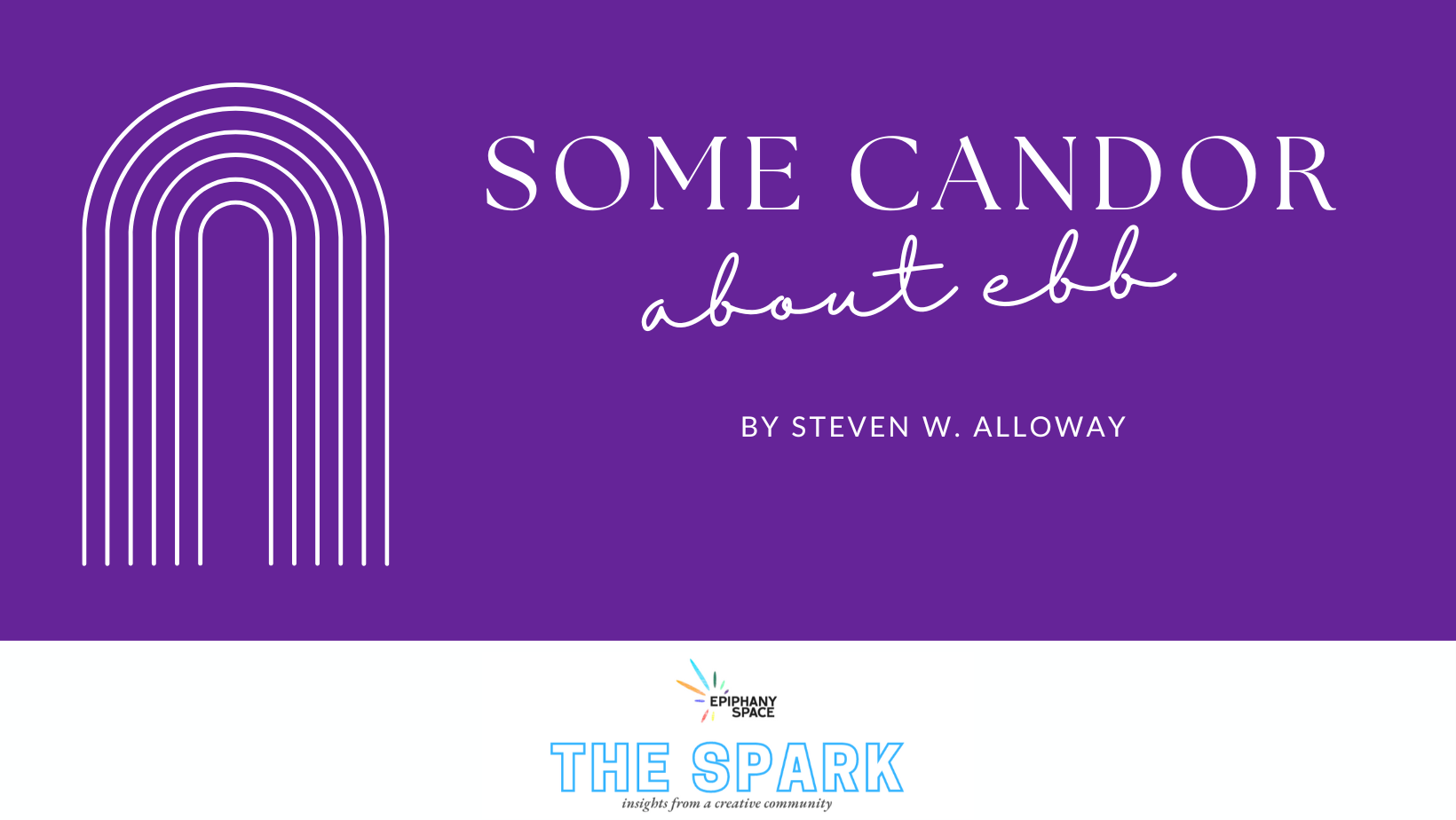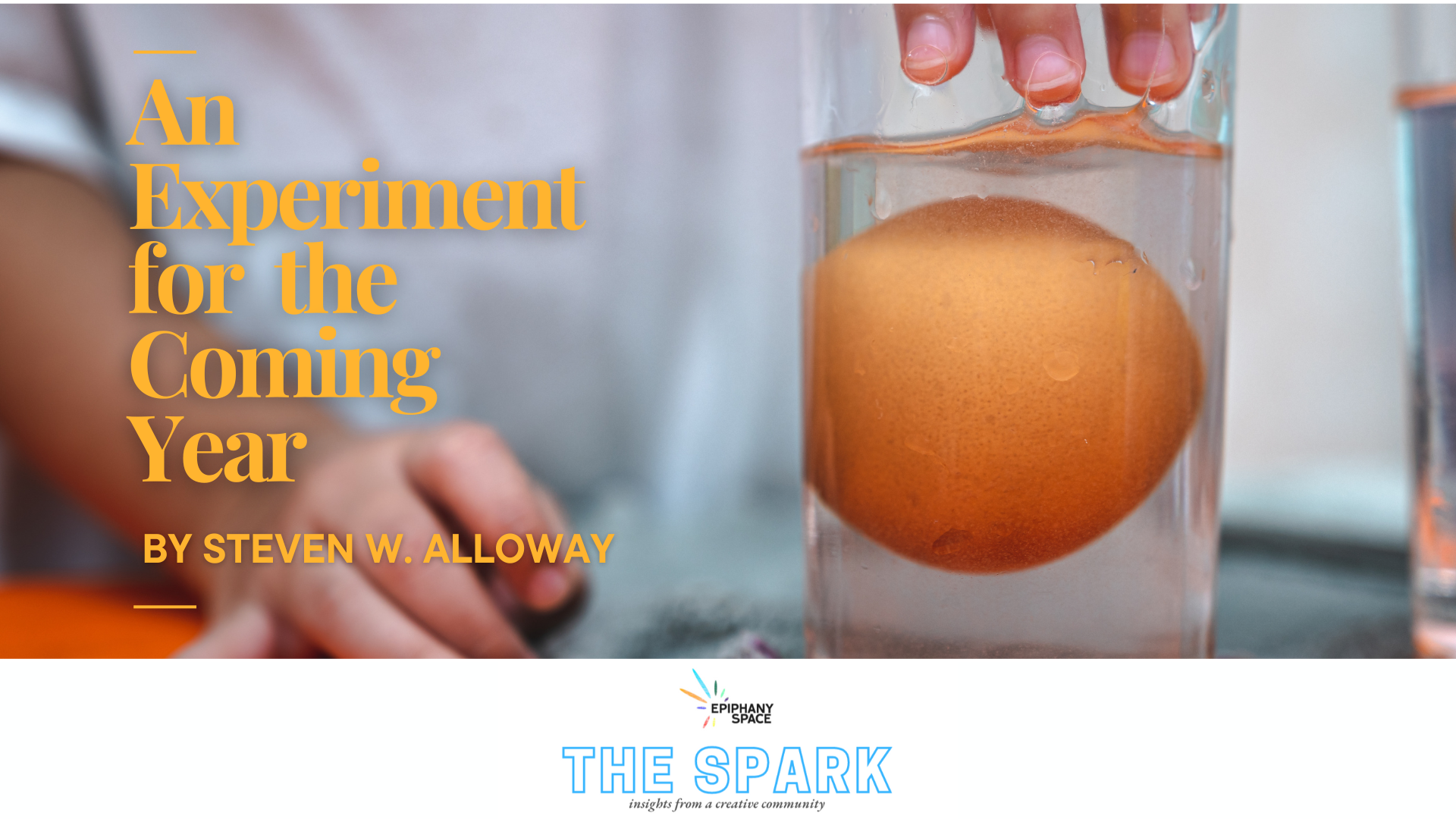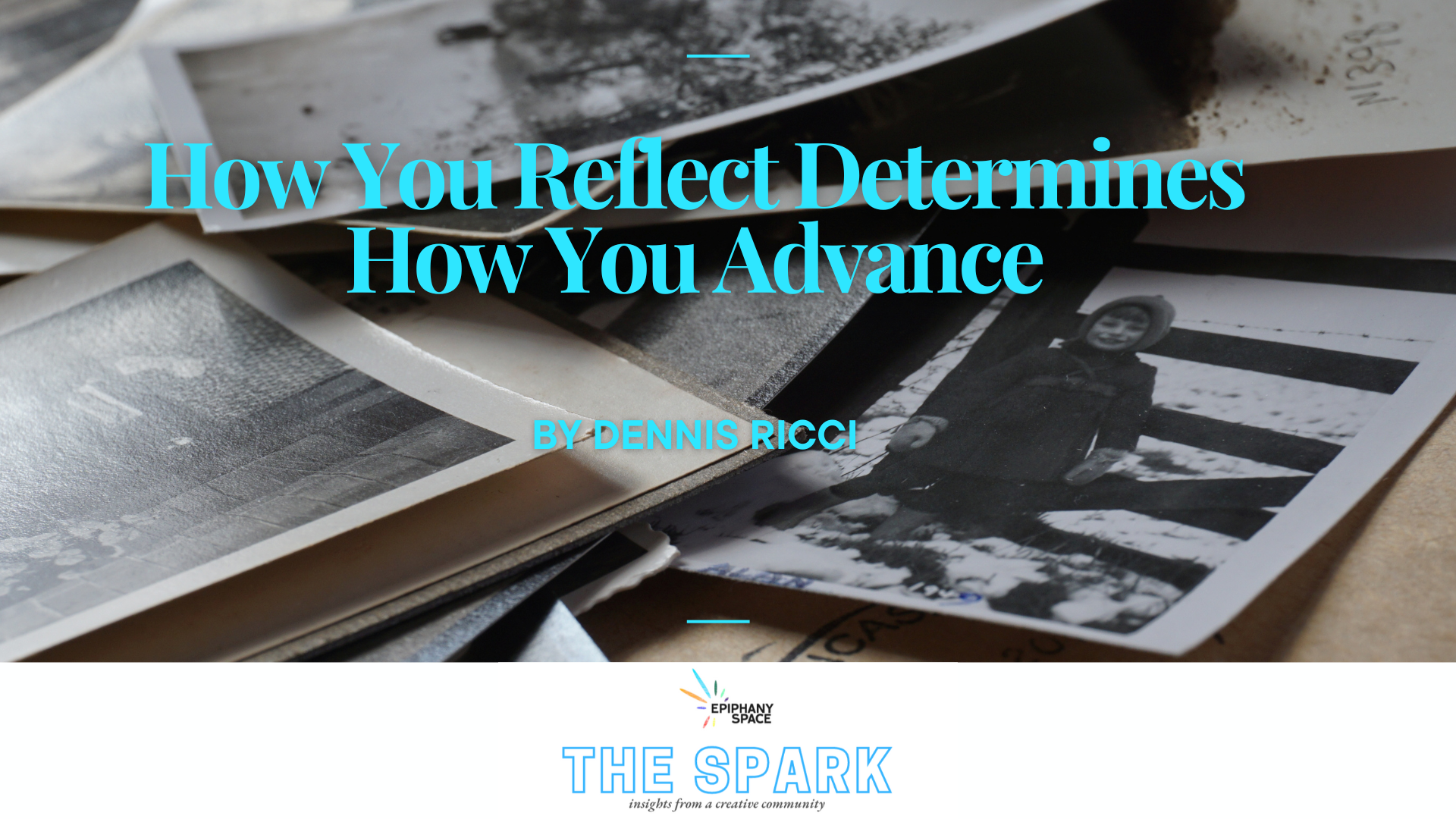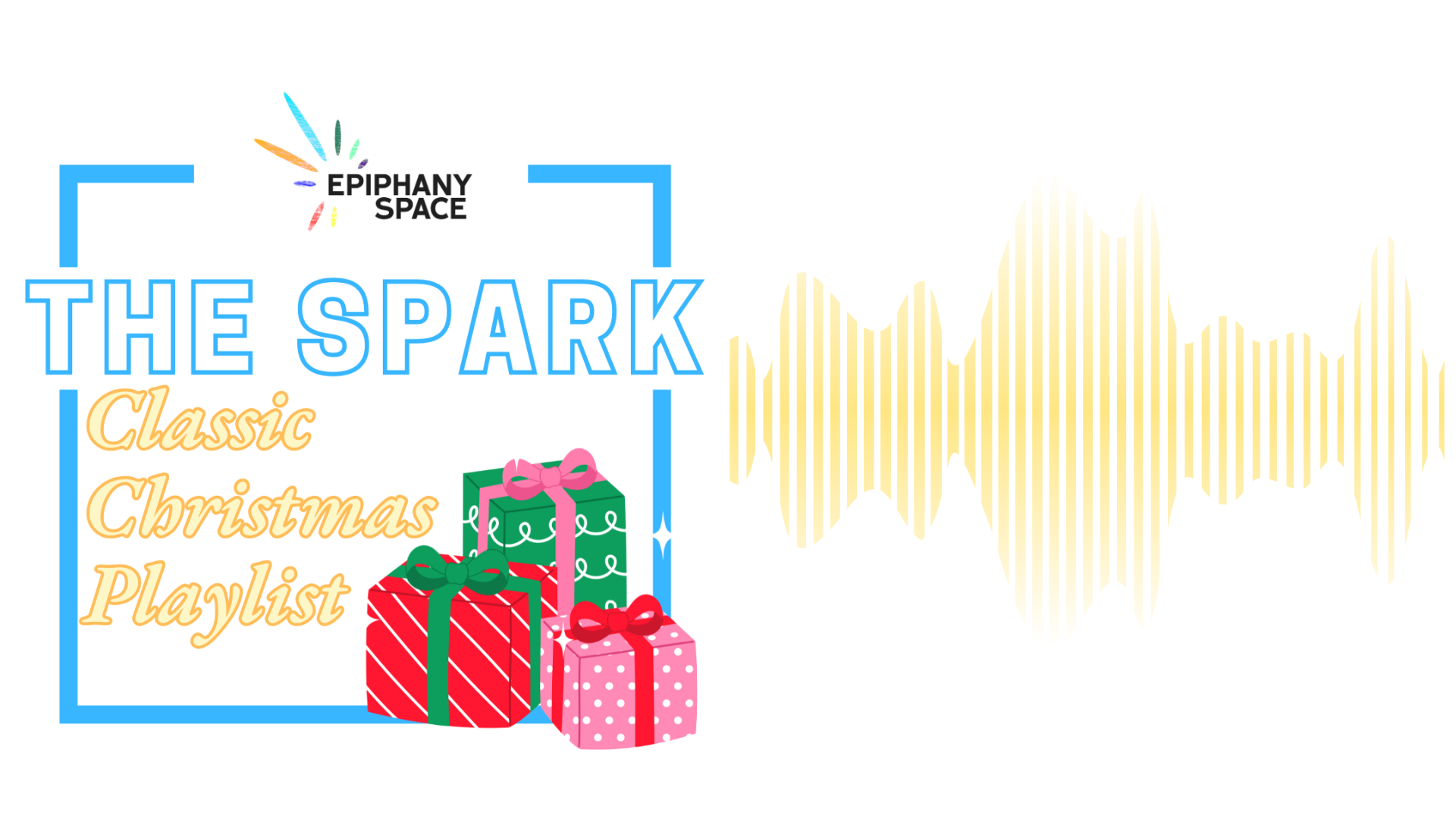Article
Some Candor About Ebb | By Steven W. Alloway
Some Candor About Ebb
By Steven W. Alloway

A number of my friends have been going through some difficult times lately. I have friends dealing with loss, hospitalization, financial difficulties, and other personal issues—not to mention the general state of the world right now, which I don’t think is going to start curing any sleepless nights anytime soon, regardless of your beliefs or your position on the political spectrum.
I’ve had a rough couple of weeks myself. To be honest, my problems seem fairly petty when compared with what I know other people are going through right now, but that doesn’t mean those problems haven’t taken their toll. Things have been frustrating, to say the least. For a lot of us.
So in light of all of that, the question I want to pose is this: Can we still be creative during these difficult and frustrating life episodes? Can we still make great art? And the answer is: Sometimes. I mean, yes, absolutely. But it’s more complicated than that. Much like life.
Suffering For Your Art
There are those who will tell you that in order to create great art, you must suffer. There is something to it. Going through difficult circumstances is how we grow and mature, and growing and maturing is one of the ways that our art evolves and improves.
And plenty of art springs directly from pain and difficult circumstances as well, both internal and external. Were it not for the socioeconomic upheaval in Russia in the 19th century, Anton Chekhov would never have written
The Cherry Orchard. Without the Great Depression and the Dust Bowl, John Steinbeck would never have written
The Grapes of Wrath. And had Jake Gyllenhaal not broken her heart and stolen her scarf, Taylor Swift never would have given us
All Too Well.
There are countless other examples of amazing, beautiful things springing from terrible times and bad situations. So we look at the art that comes from pain, and we glorify the pain. “That’s where true art comes from!” That’s a load of dingo’s kidneys. Pain is part of life. But so is pleasure. Bad times are inevitable, but so are good times. And the world goes ‘round.
But “true art” comes from both. Our growth as people, as well as our evolution as artists, requires both the good and the bad. The mentality of, “I’m not creating great art because I’m not suffering enough” is hogwash. Suffering doesn’t turn people into great artists. Great artists channel their suffering into art to make the best of a bad situation. But they can do the same thing with good situations.
Compare and Despair
On the flip side, it’s also easy to think that, when suffering does come along, we need to be channeling it into art. We look at those great artists, creating great things out of their pain. Then we look at our own difficult times and think, “Why am I not creating art right now? Other people take their pain and turn it into diamonds. While all I’m doing is sitting on the couch, eating Cheez-Its, and re-watching
The Big Bang Theory. I must be terrible and worthless.”
You’re not creating art at the same rate as someone else, in similar circumstances. So you look at them and feel inferior. Then that feeling of inferiority makes it even harder to find the motivation to be creative. It becomes a vicious cycle.
But it’s important to remember that you’re not them. This month, we’ve explored the ebb and the flow of creativity. But everyone ebbs and flows differently. Just because someone else is flowing while you’re ebbing doesn’t make them better, or you worse. You may need your ebb now and your flow later, while someone else may need to flow first and then ebb afterwards. It’s entirely possible that, while you’re having your flow of creativity, they’ll be looking at you and thinking, “Wow, I wish I could create like them.”
That’s another thing to remember: You never know what someone else is thinking or feeling. What something looks like on the outside often isn’t anything like how it feels to the person going through it.
You may see a person creating great art while they’re struggling and think that they’re handling things really well, when really, they’re barely hanging on, or headed for burnout. And likewise, especially in the midst of terrible circumstances, you may think you’re not doing enough, that you’re lacking or deficient—but there’s a good chance someone else is looking at you and is amazed at all that you’re accomplishing.
Art and Healing
Another important thing to remember is that creating art takes energy: physical, mental, spiritual, and emotional energy. And dealing with worry, anxiety, depression… That saps all of those types of energy, very quickly. But you don’t always see it in the moment. In your own mind, you’re not actually DOING anything, so why don’t you have the energy or the motivation to create? You must be lazy. You must be inferior.
But you are doing something. You’re healing. Sometimes that takes all the energy you have. And it often takes time, too. Much of that healing happens beneath the surface, so it’s easy to think that nothing’s happening. But it is. Even while you’re sitting on the couch, eating Cheez-Its and re-watching
The Big Bang Theory. Sometimes, that’s what you need.
Feeling Out the Seasons
Art can be an important part of healing as well. But like everything, it takes time. After all, the healing process is just that: a process. Art and creativity can be part of that process, but they’re not the only part.
The problem is, often, all we see is the moment we’re in. If we’re not being creative today, right now, then we’ve failed. But today’s healing work might look very different from yesterday’s, or tomorrow’s. And they’re all important to the process.
In talking about the need for and the process of healing during difficult circumstances, I can’t think of a better example than 2020, when we were all suddenly thrust headfirst into a major, international public health crisis. For many, the need for healing was literal. But even for those of us who didn’t get sick, dealing with the Pandemic proved to be a major crisis, personally, emotionally, and existentially.
But at the same time, for those of us who weren’t sick, dealing with that crisis looked a lot like just sitting at home doing nothing. Scrolling on social media, looking at our friends posting their latest loaf of sourdough, or the sweater they’ve just knitted, or just memes about famous composers, authors, and playwrights who churned out some of the best art in history while they were in quarantine.
That’s how I was, particularly in the first couple of months of the Pandemic. Stay-at-home orders were issued. Life was put on hold. No excuse for not spending all my newfound free time writing new stories for publication, scripts for production, etc.
“I’ve got nothing else to do!” I thought to myself quite a bit. “Why am I just sitting here watching TV instead of taking this once-in-a-lifetime opportunity to create great art?”
Well, the reason was because all around me, people I cared about were getting sick, the news was filled with stories about how many people were dying, overcrowded conditions in hospitals, overworked doctors and nurses… And there seemed to be no end in sight. Just processing all of that on a daily basis, trying to get through it, took more energy than I was prepared to use and left me without a lot of motivation for creating art.
That was at first. However, slowly but surely, the seasons changed. And gradually, creating art did become part of my healing process and a way to deal with the chaos going on all around. It didn’t look like I thought it would, though. I was berating myself for not working on any of the thousand unfinished projects I had languishing in folders on my computer. If not now, then when? But it turned out, finishing old projects in order to “make good use of my time” wasn’t what I needed.
What I needed was a distraction, a way to connect with my friends… and plenty of cookies. So I started a livestreamed baking show. Just privately, on my Facebook page. I set my phone on a tripod and talked my way through making some of my favorite recipes, while responding to comments left by my friends tuning in. I did this weekly for a few months. I came to look forward to it, and a number of my friends told me they did too. Eventually, I had requests for different recipes to make, and even a theme song.
That was the beginning of the flow. It felt like more of a trickle. But from there, I was able to work on other creative endeavors as well. I wrote some stories. I did a socially distanced monologue for Zombie Joe’s Underground. And my theater group, Spirit OnStage, started staging livestreamed plays on Zoom. We started with staged readings, then gradually evolved to more complex productions that explored the platform and what you could do with it in a number of different ways.
In retrospect, while it wasn’t in the way I expected, the Pandemic ended up being one of the most prolific creative times in my life. And the plays I wrote for Zoom are some of the best I’ve ever written. But it took some time to get there. The ebb had to come before the flow. Both were necessary for getting through an incredibly difficult time.
There are a lot of times in our lives, especially when it comes to healing and recovery, when our creative processes require both ebb and flow. When that happens, though, it can be easy to focus on the ebb. To feel guilty about the ebb. To get demoralized, which in turn only serves to make the ebb stronger.
We have to trust the healing process. We have to trust that the ebb in creativity is part of it—but that it’s only one part. The flow is part of the process too. If we can give the ebb a chance to do what it needs to, without feeling guilty about it, without comparing ourselves to others who seem to be doing more than we are, then sooner or later, we’ll get back to the flow that helps us to heal through creation and through art.




